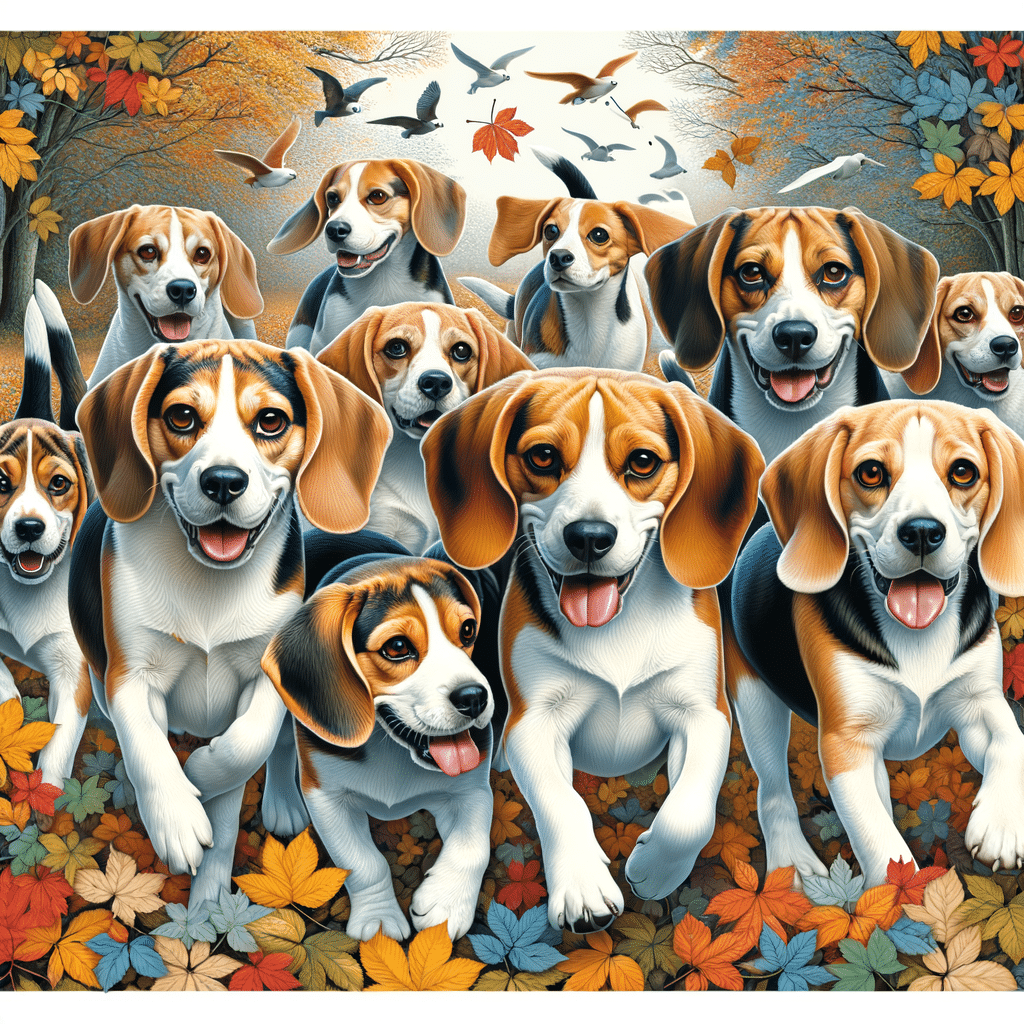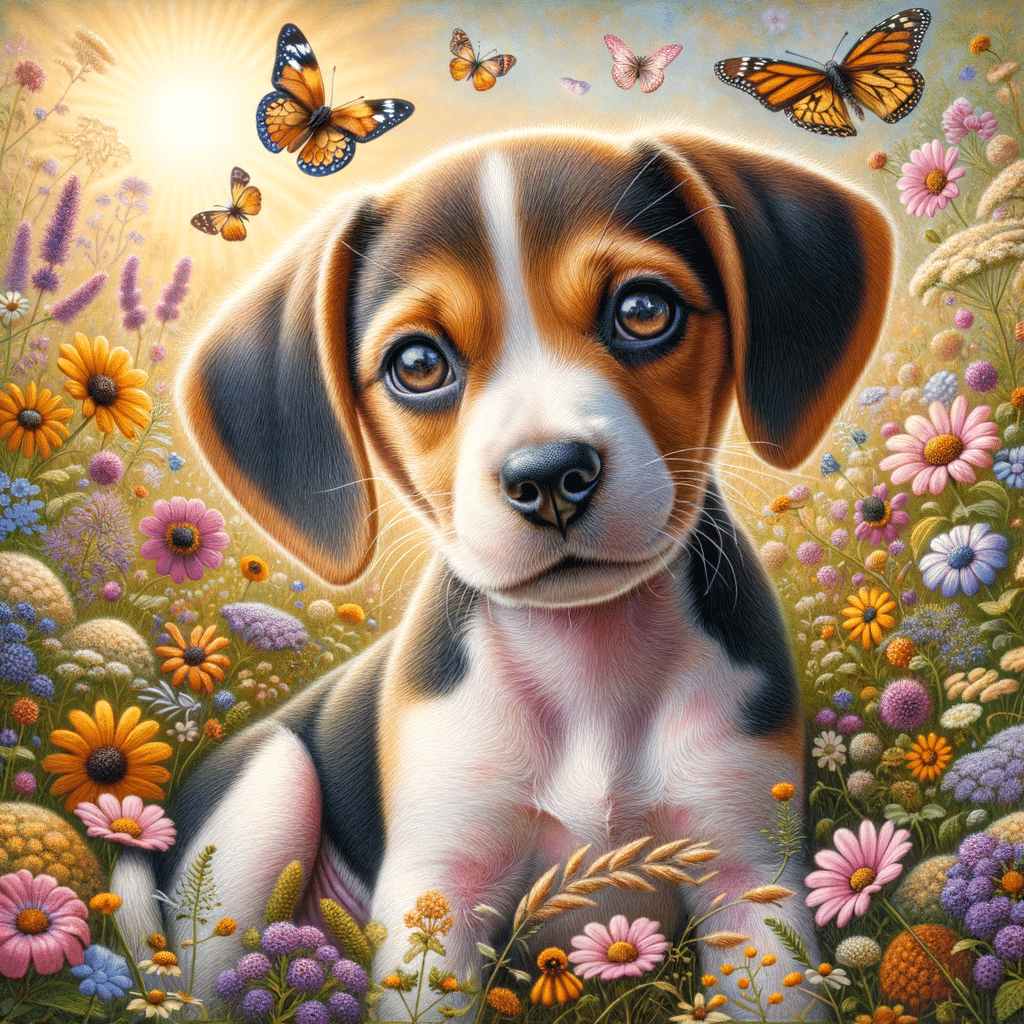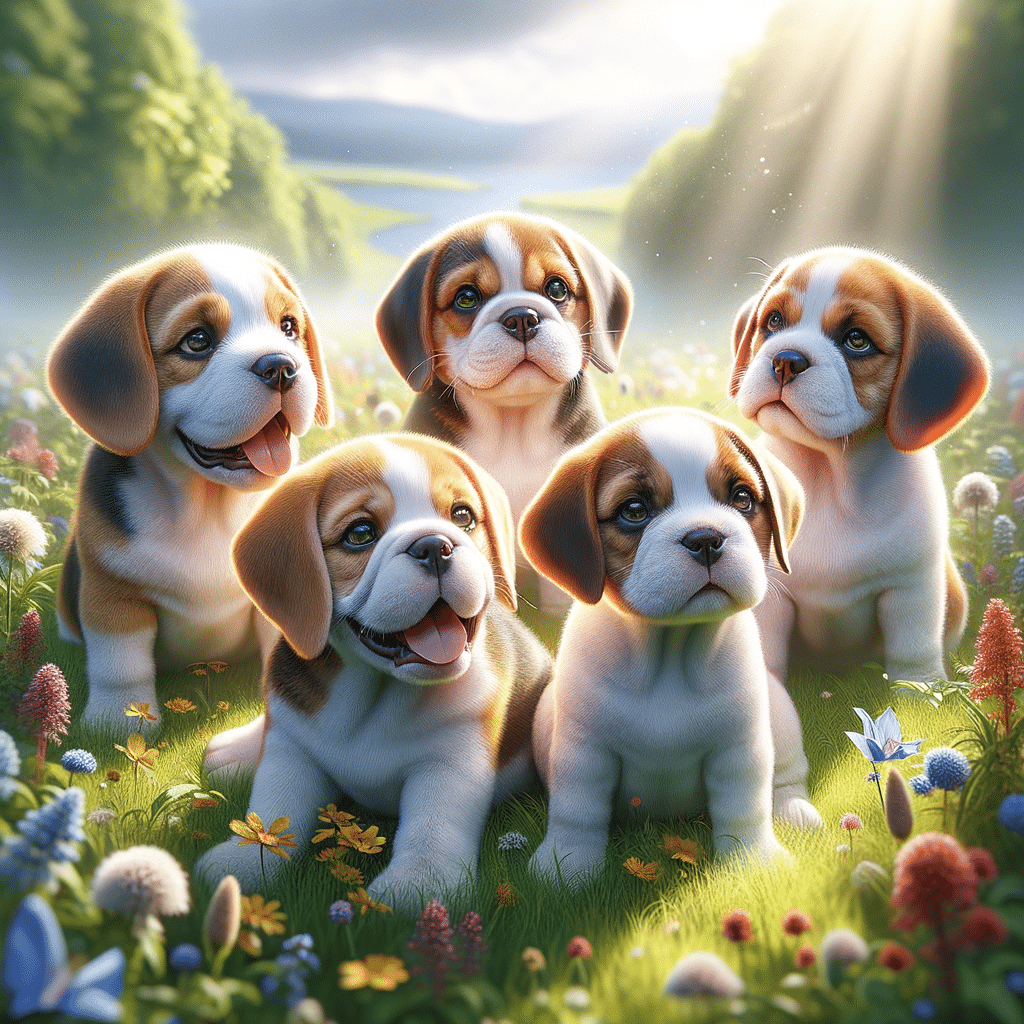Beagle and pitbull mix puppies, often called beaglebulls, are a unique hybrid medley of two popular breeds. These medium-sized dogs embody traits that appeal to a variety of dog enthusiasts.
In This Article
Due to their beagle and pitbull lineage, beaglebulls are known for being sturdy and muscular. These mixed-breed dogs usually sport a square-shaped head accompanied by the signature beagle floppy ears. Their appearance may vary, but beaglebulls often inherit the diverse coloring of both parent breeds, ranging from brown and black to the rarer blue or brindle.
The crossbreed stands out not only in appearance but also in personality. Owners of beaglebulls often describe their pets as playful and energetic yet friendly and intelligent. The mixture results in a temperament suitable for active families, especially those with a yard for the dog to expend energy. While training them might present some challenges due to their tenacity, a firm, patient owner can successfully assert themselves as the pack’s leader.
Care for these hybrids extends to managing their health, a composite of the health profiles of pitbulls and beagles. Prospective owners should consider potential health concerns and commit to regular check-ups, a nutritious diet, and sufficient exercise. This maintains the beaglebull’s well-being and allows it to thrive within the family setting.
Highlights
- Beaglebulls are strong, medium-sized dogs with a distinctive mix of beagle and pitbull physical traits.
- They display a playful, energetic temperament and thrive with active families and consistent training.
- Maintaining dog health requires attention to their mixed-breed specific needs through regular care and preventive health measures.
Origin and History
The beagle and pitbull mix, known as the beaglebull, is a crossbreed with distinct origins stemming from its parent breeds. Each breed contributes unique characteristics from their historical roles as hunting companions and working dogs.
Beagle History
The beagle’s roots trace back to England, dating to before the Roman era, though the modern type was developed in the 1830s. Primarily bred for hunting due to their keen sense of smell, beagles were used to track small game like rabbits. Their size and demeanor made them excellent companions for hunters on foot. They were recognized by the AKC (American Kennel Club) in the 1890s.
Pitbull History
The term “pitbull” commonly refers to the American pitbull terrier, a breed originating in the British Isles. This breed emerged in the 19th century from cross-breeding bulldogs and terriers to combine strength and agility. Primarily, these dogs served in roles ranging from working on farms to guardians. Despite common misconceptions, not all pitbulls have a history of fighting; many were valued family pets and working dogs. Pitbulls are not recognized by the AKC (American Kennel Club).
Beagle-Pitbull mix Origins
The beaglebull is a modern crossbreed, with its intentional breeding likely originating in the United States. The goal was to blend the beagle’s tracking and companionship qualities with the pitbull’s strength and loyalty. There is no specific time frame for when this crossbreed first appeared, but it likely gained popularity as family pets and companions in the late 20th and early 21st centuries.
Characteristics and Appearance
The beagle pitbull dog breed, often known as the beaglebull, is a unique blend of the beagle and the pitbull’s distinctive traits. They have a mix of physical robustness and spirited energy wrapped in varied colors.
Physical Attributes
The beaglebull is a medium-sized canine. The adult dog generally weighs between 30 to 40 pounds when fully grown. Standing at 17 to 20 inches, the height of beaglebulls reflects a modestly towering posture.
These dogs carry the pitbull’s muscularity alongside the beagle’s agility, presenting as active and capable pets.
Coat and Color
The coat of a beaglebull is typically short and smooth, with a density that provides warmth and a sleek appearance while requiring minimal grooming. Their coat is thin and not well-suited for extreme cold.
An array of colors can paint the coat of a beaglebull.
- Standard colors: Brown, White, Black, Red
- Less common colors: Blue, Brindle, Gray
The coat color can manifest in various patterns, from solid to a mix, often borrowing the brindle pattern seen in many pitbulls.
While reflective of its parentage, this hybrid’s coat and color contribute to a low-maintenance yet striking appearance.
Temperament and Behavior
The beagle pitbull mix combines the affectionate loyalty of a beagle with the energetic and protective nature of a pitbull. This hybrid displays a blend of both breeds’ temperaments, often resulting in a friendly and intelligent companion.
Personality Traits
The beaglebull often has an amiable and playful personality. These dogs are noted for their intelligence and love of engagement, making them eager to please in training scenarios. They commonly show a loyal disposition, forming strong bonds with their owners. While inherently friendly, their protective instinct can surface if they perceive a threat to their family.
- Affectionate: They form deep bonds and display affection openly.
- Energetic: High energy levels demand regular exercise.
- Playful: They enjoy interactive play and require mental stimulation.
- Intelligent: Their smart nature makes them receptive to training.
- Protective: A protective streak is often evident, but with proper socialization, it does not lead to aggression.
Behavior With Family and Other Pets
Beagle pitbull mixes are typically welcoming and loving when integrated into a family. Their friendly demeanor extends to adults and children, with whom they can be particularly gentle if socialized from a young age. As for other pets, the beagle’s high prey drive may manifest, so early socialization is crucial to foster harmonious relationships after adoption.
- Family-oriented: They seek the companionship and inclusion of family members in activities.
- Pet-friendly: Can coexist peacefully with other pets when properly socialized.
The beaglebull’s behavior with family and other pets is generally positive. Pet ownership requires consistency in training and socialization to curb stubborn or protective tendencies that could lead to problematic behavior. With adequate exercise and attention, these dogs are less likely to display unwanted behavior like digging or excessive barking.
Health and Care
Caring for a beagle and pitbull mix, commonly known as a beaglebull, involves a dedicated health and care routine. Owners should pay close attention to their pet’s diet and nutrition, ensure adequate exercise, maintain grooming and hygiene, and be alert to common health issues.
Diet and Nutrition
Proper diet and nutrition are crucial for the health of a beaglebull. They typically require a balanced protein-rich diet to support their muscular build.
- Food: Opt for high-quality dog food that meets the nutritional needs of medium-sized breeds.
- Portions: Follow vet-recommended food portions to prevent obesity.
Exercise Requirements
Regular exercise is essential for this energetic crossbreed to maintain overall health and prevent behavioral issues.
- Daily exercise: At least 60 minutes of physical activity is recommended.
- Activities: Activities can include walks, runs, and playtime to cater to their high energy levels.
Grooming and Hygiene
Regular grooming ensures that a beaglebull’s coat remains healthy, minimizes shedding, and reduces the risk of skin infections.
- Brushing: Weekly brushing helps manage shedding.
- Teeth and ears: Routine teeth brushing and ear checks are essential to prevent dental issues and ear infections.
Common Health Issues
While generally healthy, beaglebulls may inherit genetic health problems from their parent breeds.
- Hip dysplasia: A condition that can affect joint mobility and cause discomfort.
- Allergies: They may suffer from allergies that affect their coat and skin.
Regular check-ups with a veterinarian can aid in the early detection and management of health issues.
Frequently Asked Questions
This section answers common inquiries about beagle-pitbull mixes, also known as beaglebulls, to inform potential owners and enthusiasts about their size, lifespan, temperament, cost, and care requirements.
What is the expected size and weight of a full-grown beagle-pitbull mix?
A full-grown beagle-pitbull mix typically stands between 17 to 20 inches in height and weighs around 30 to 40 pounds.
How does lifespan vary for a beagle-pitbull mix?
The lifespan of a beagle-pitbull mix is usually around 10 to 15 years, depending on factors such as health, diet, and exercise.
Can you describe the temperament and physical characteristics of a beagle-pitbull mix?
They have a mixture of physical characteristics from beagles and pitbulls, often resulting in a medium-sized build with strong musculature. Their temperament is generally energetic and affectionate, with a playful and loving disposition.
What is the typical cost range for a beagle-pitbull mix puppy?
The typical cost for a beagle-pitbull mix puppy can range from $500 to $2,000, influenced by factors like breeder reputation, location, and lineage.
What should potential owners consider before adopting a beagle-pitbull mix puppy?
Potential owners should consider the mix’s high energy levels, need for regular exercise, and socialization requirements to ensure a well-adjusted and happy companion.
Are there any specific care requirements for a beagle-pitbull mix?
To accommodate their high energy and intelligence, beagle-pitbull mixes require a balanced diet, regular exercise, mental stimulation, routine health checkups, and positive reinforcement training.






